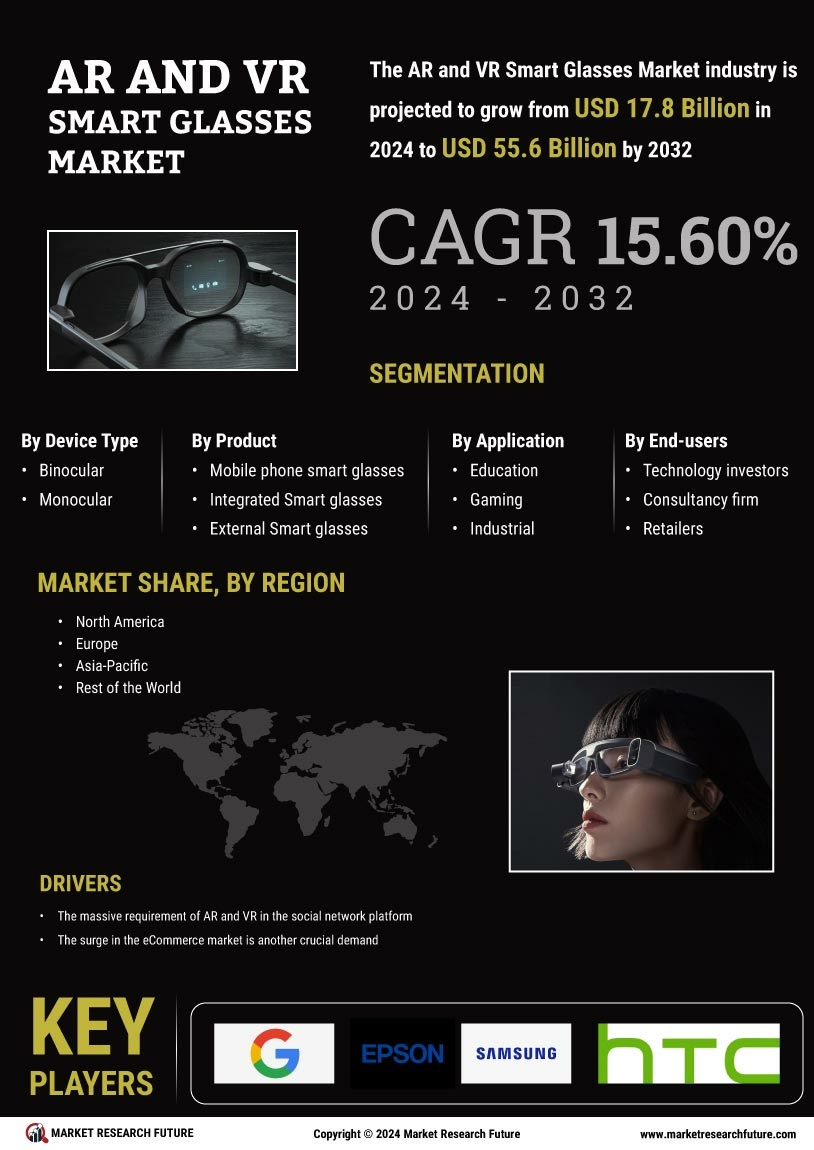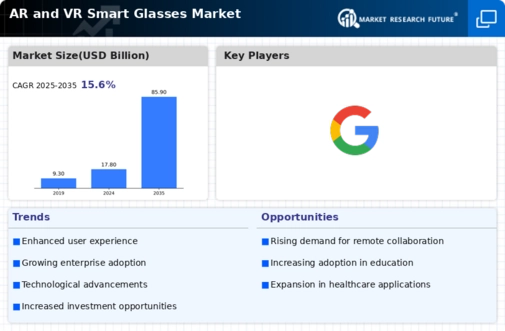Integration with IoT and Smart Devices
The integration of AR and VR smart glasses with Internet of Things (IoT) and other smart devices is emerging as a vital driver for the AR and VR Smart Glasses Market. As smart homes and connected devices become more prevalent, the ability to interact with these technologies through augmented and virtual reality is gaining traction. This integration allows users to visualize data, control devices, and access information seamlessly through their smart glasses. Market forecasts suggest that the convergence of AR and VR with IoT could lead to a substantial increase in user engagement and functionality, potentially expanding the market reach. As consumers seek more interconnected experiences, the synergy between AR and VR smart glasses and IoT devices is likely to propel growth in the AR and VR Smart Glasses Market.
Advancements in Technology and Hardware
Technological advancements play a crucial role in shaping the AR and VR Smart Glasses Market. Innovations in hardware, such as improved display technologies, enhanced processing power, and lighter materials, are making smart glasses more appealing to consumers. For instance, the introduction of high-resolution displays and advanced sensors has significantly enhanced the user experience, allowing for more realistic and interactive applications. Market data suggests that the hardware segment is expected to witness substantial growth, with a compound annual growth rate projected to exceed 20% over the next few years. This rapid evolution in technology not only attracts new users but also encourages existing users to upgrade their devices, thereby fueling the overall market growth. As such, advancements in technology and hardware are likely to remain a key driver for the AR and VR Smart Glasses Market.
Growing Demand for Immersive Entertainment
The AR and VR Smart Glasses Market is witnessing a surge in demand for immersive entertainment experiences. As consumers increasingly seek engaging content, the integration of augmented and virtual reality into gaming, movies, and live events becomes more prevalent. According to recent estimates, the entertainment sector is projected to contribute significantly to the overall market growth, with revenues expected to reach several billion dollars by 2026. This trend indicates a shift in consumer preferences towards interactive and immersive experiences, which AR and VR smart glasses can effectively deliver. As technology advances, the quality of content and user experience is likely to improve, further driving adoption in this sector. Consequently, the entertainment industry's evolution appears to be a pivotal driver for the AR and VR Smart Glasses Market.
Increased Investment in AR and VR Startups
Investment in AR and VR startups is becoming a prominent driver for the AR and VR Smart Glasses Market. Venture capitalists and tech giants are increasingly recognizing the potential of augmented and virtual reality technologies, leading to a surge in funding for innovative startups. This influx of capital is facilitating the development of cutting-edge applications and solutions that leverage smart glasses technology. Recent reports indicate that investment in AR and VR sectors has reached unprecedented levels, with billions of dollars allocated to various projects. This financial backing not only accelerates technological advancements but also fosters a competitive landscape that encourages innovation. As a result, the growth of AR and VR startups is likely to have a lasting impact on the AR and VR Smart Glasses Market, driving new applications and expanding market reach.
Rising Applications in Education and Training
The AR and VR Smart Glasses Market is experiencing a notable increase in applications within the education and training sectors. Educational institutions and corporate training programs are increasingly adopting augmented and virtual reality technologies to enhance learning experiences. By providing immersive simulations and interactive environments, smart glasses facilitate better retention of information and practical skills. Market analysis indicates that the education segment is expected to grow significantly, with projections suggesting a doubling of investment in AR and VR educational tools over the next few years. This trend reflects a broader recognition of the effectiveness of experiential learning methods. Consequently, the rising applications in education and training are poised to be a substantial driver for the AR and VR Smart Glasses Market, as more organizations seek to leverage these technologies for improved outcomes.

















Leave a Comment